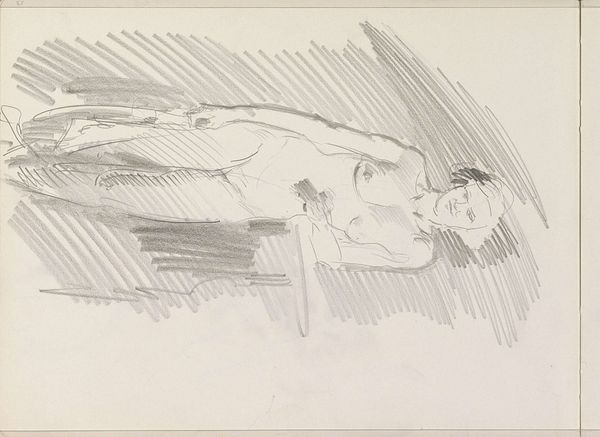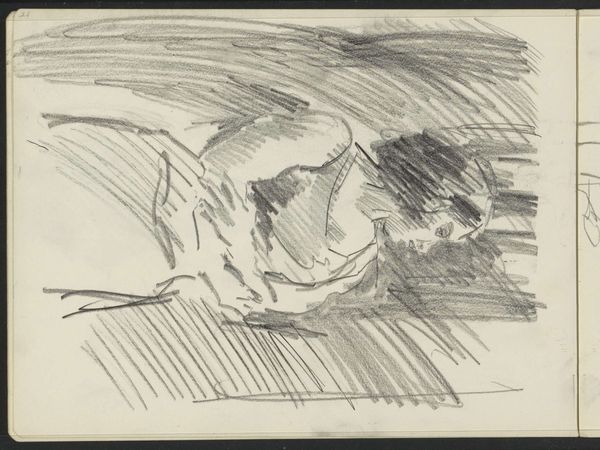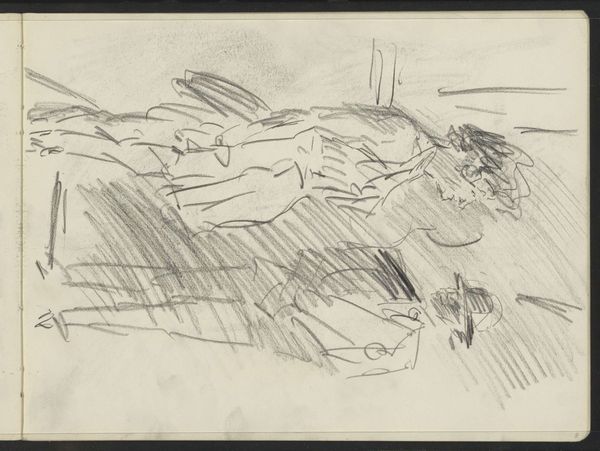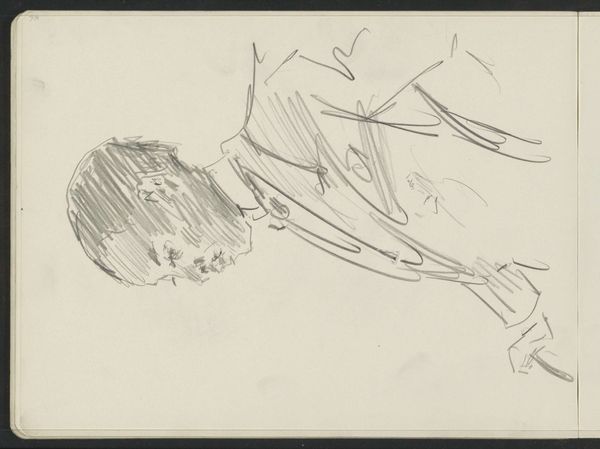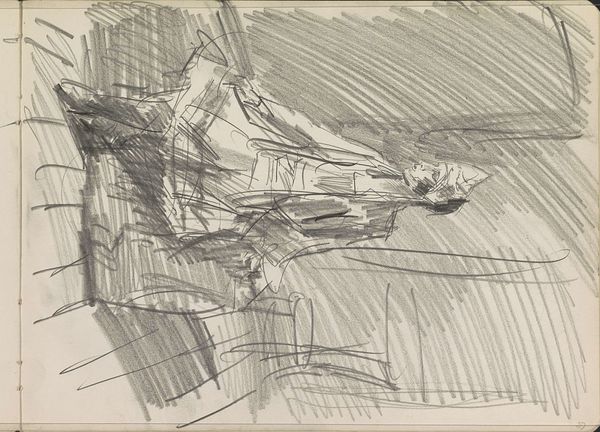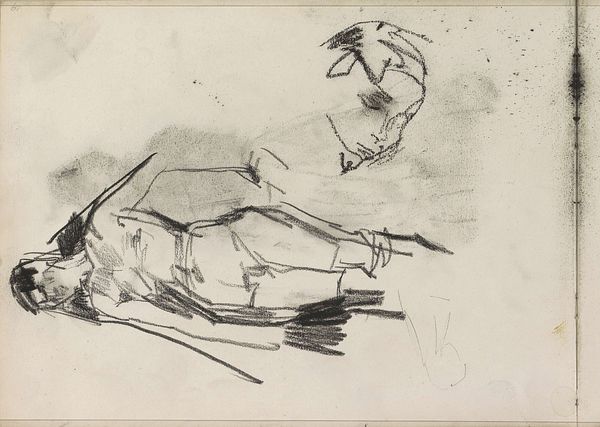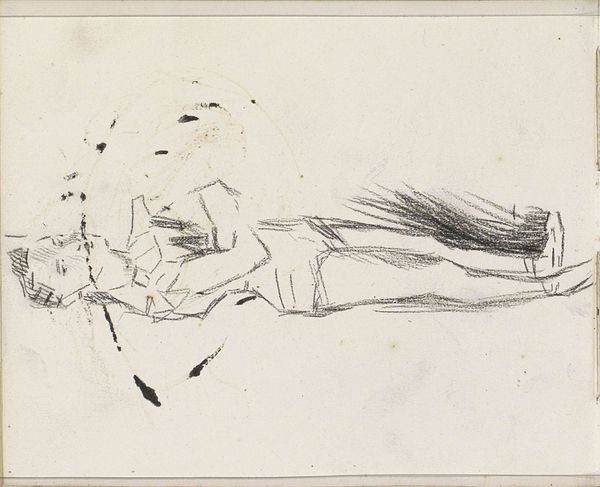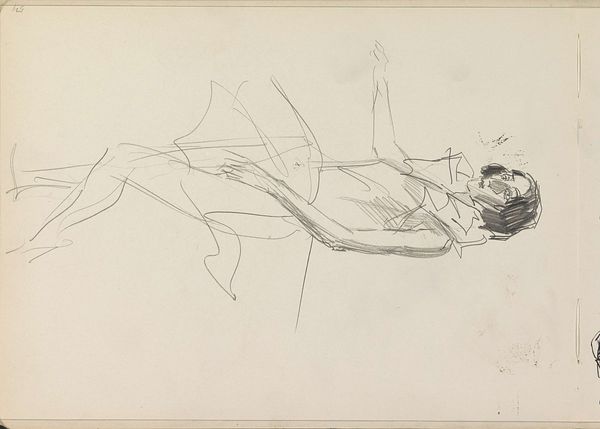
drawing, pencil
#
portrait
#
drawing
#
light pencil work
#
pen sketch
#
figuration
#
personal sketchbook
#
idea generation sketch
#
sketchwork
#
ink drawing experimentation
#
sketch
#
pen-ink sketch
#
pencil
#
sketchbook drawing
#
sketchbook art
#
realism
#
initial sketch
Copyright: Rijks Museum: Open Domain
Editor: Here we have "Acrobaat," a pencil drawing by Isaac Israels, created sometime between 1875 and 1934. It's intriguing because it feels so raw and immediate, like a fleeting impression. What jumps out at you when you look at this piece? Curator: Oh, I love that word - fleeting! That's exactly the genius of it. It's as if we've caught the acrobat in a private moment, backstage perhaps, where the mask of performance has slipped. Do you feel the energy in those loose, scribbled lines, almost vibrating off the page? Editor: I do, especially around the head and hands. The shading feels almost frantic there. Was this a common style for Israels? Curator: Not always, but Israels had a real passion for capturing everyday life, for finding beauty in the unposed and the transient. Think of it as the visual equivalent of jazz - improvisation, rhythm, capturing a mood rather than precise detail. Imagine Israels, sketchbook in hand, dashing off these lines while the acrobat takes a break. Editor: So, it’s less about perfect representation and more about capturing a feeling? Curator: Precisely! It makes me think of Degas' dancers, only even more intimate. What do you make of the composition – all those diagonals cutting across the page? Editor: I guess it adds to that sense of dynamism. Like the acrobat is about to spring into action, even though he’s resting. Curator: Beautiful! You see, it's a paradox, a moment of stillness brimming with potential energy. Art is funny that way; isn’t it? Full of juicy little contradictions! Editor: I never thought about it that way, but I can definitely see that now. It's amazing how much feeling he could convey with so few lines. Curator: Absolutely. And that, my friend, is the magic of a master sketch! I can only dream of having something so insightful on display in my own personal sketchbook.
Comments
No comments
Be the first to comment and join the conversation on the ultimate creative platform.


